From Strangler Figs to Flyovers: Bridges
“My father learned the art of bridge building at the University of Illinois and then taught the art in the Army Corps of Engineers. But before assisting in building three floating bridges to carry allied forces across the Rhine in WWII, he ordered six weeks of reading, writing, and arithmetic for some six hundred of his men in the 1698th Engineer Combat Battalion. Literacy and numeracy, he convinced his superiors, were the nuts and bolts of effective bridges.”—Skip Eisiminger
Skip the B.S.
By Skip Eisiminger
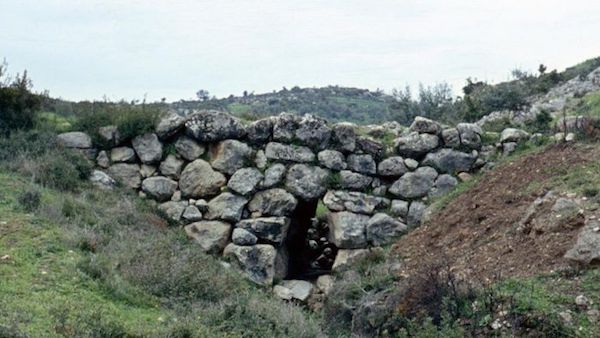
I. “Our greatness resides, not in our walls, but in our bridges.”—The Wordspinner
CLEMSON South Carolina—(Weekly Hubris)—February 2018—A folk tale of dubious origin is set in the Blue Ridge Mountains. It seems that two families now scattered across the Carolinas had often fought over rights to the sparse game these foothills offered. But a tornado pushed a towering oak across the Cavern River that formerly had taken the better part of an hour to cross.
Once some of the limbs and roots were lopped off, that fallen tree made a serviceable bridge to better hunting grounds for both families. With more frequent contact during the berry-picking season, the women made new friends of old rivals, and soon a few of the men joined them. Several years later, a wall of water following a hurricane that had parked itself near Table Rock washed the natural bridge away, and the feuding picked up where it had left off.
Nature surely taught humans the advantages that bridges offer. Early man may have observed how some ant species used their powerful mandibles to form rafts and bridges of themselves to cross a body of water. Human hunters may also have observed rats and other carnivores forming “pyramids” so that the nimblest could reach a piece of meat one of the hunters had hung up to dry. With a leg up, the “apex” rat would climb the slab of meat, cut the thong holding it out of harm’s way, and drop it to where the “base” could feast on man’s efforts.
When it became clear that bridges were safer, cheaper, and faster than other means of reaching a goal, humans began stealing a page from nature. When the Maasai realized that one bird had a nose for honey in a land where sweets were rare, they learned to imitate its shrill call. Once the bird was tamed, it led humans to a hollow tree hiding its liquid gold. At this point, someone in protective clothing climbed the tree, smoked out the bees, and stole the honeycombs. To keep the relationship on a sound footing, the Maasai always left a comb for the “honey guide,” the “natural bridge” that had carried them there.
When Homo sapiens recognized that they functioned more efficiently in sociable groups rather than as isolated individuals or even families, they embarked on an infinitude of bridge building. The results include in no particular order: language “bridges”; domesticated-animal “bridges”; strangler-fig bridges in the Indian rain forests; suspension bridges woven of grass in the Andes; tunnel “bridges” through the Alps and Appalachians; the “fellowship-of-the-rope” bridges mountaineers depend on; ladders, elevators and escalators; mobile “bridges” such as cars, ships and planes; human “bridges” between God and man called “priests” and “pontiffs”; cell phone “bridges”; the “bridges” called email and Twitter, crossed by millions every day; the symbolic, universal “bridge” called mathematics; and ideas like the Golden Rule, which is a golden “bridge” in every major religion.
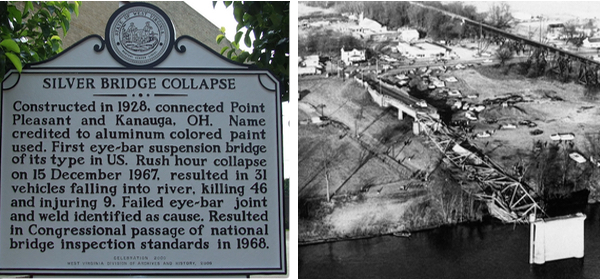
II. In 1967, the Silver Bridge over the Ohio River collapsed killing 46 and injuring nine.—Multiple sources
My guess is the first bridge consisted of a stone some nomadic men wrestled into a swift-flowing stream where a child had drowned. Architectural historians generally credit the Romans with perfecting the art of bridge building because some of their bridges, tunnels, and aqueducts are not just standing, but functional two thousand years after the scaffolding came down. In just the last 30 years, the Chinese have built the highest and longest bridges in the world. The former is a bridge deck soaring 1,854 feet above the Beipan River, and the latter is a 102-mile sea-arrow between Macao and Hong Kong. While few new or innovative bridges are being built in this country, the Chinese are building pedestrian bridges with glass decks; the British are constructing “octagon bridges” that roll and unroll on command; and Dutch robots are spinning bridges out of molten steel cords. Sadly, the safety of American infrastructure in 2017 was rated by the American Civil Engineering Society at D+.
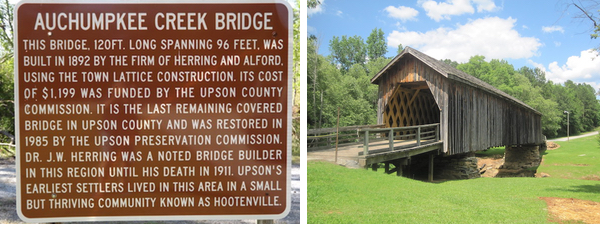
III. “Praise the bridge that carried you over.”—George Colman
I come from a proud family of bridge builders. In the late 19th century, Warren Alford, one of my great grandfathers, an unschooled Civil War orphan, forged himself into one of Georgia’s finest civilian engineers. In 1997, when a flood washed away the last of Alford’s “town-lattice” bridges, the local community retrieved it, repaired it, and set it back on its abutments. Today, the Auchumpkee Creek Covered Bridge is listed on the National Register of Historic Places.
My father learned the art of bridge building at the University of Illinois and then taught the art in the Army Corps of Engineers. But before assisting in building three floating bridges to carry Allied forces across the Rhine in WW Two, he ordered six weeks of reading, writing, and arithmetic for some 600 of his men in the 1698th Engineer Combat Battalion. Literacy and numeracy, he convinced his superiors, were the nuts and bolts of effective bridges.
Though Dad was personally responsible for destroying the locks on the Wesel-Datteln Canal, a bridge in its own right, he returned to Germany after the war to clear some of the bridges on the Rhine left by the retreating Germans and to rebuild some of the Autobahn’s fallen overpasses. When he finally agreed to speak about the war in his mid-80s, he told me that one of his major regrets as a bridge builder was his refusal to rebuild one Autobahn bridge near Frankfurt as the Germans wanted it. Despite the pleas of German engineers, Dad stubbornly insisted on a two-lane overpass. But, as traffic increased and the American occupation ended, Dad’s two-lane bridge on a four-lane highway was torn down and widened.
Perhaps Dad’s proudest achievement was the Green Peter Dam in west-central Oregon. Across the top of this 1,500-foot wide, 327-foot tall dam is a bridge crossing the Middle Santiam River. A few months before he died, he asked my sisters and me to hang pictures of “the two things I love most” on the wall he faced when lying in bed.
“And what are these?” I asked.
“Your mother and the Green Peter Dam.”
“Damn,” I said under my breath, having learned my place years earlier as the offspring of an engineer.
Perhaps because of my father’s bridge-building, I’ve always enjoyed watching bridges under construction. Most recently, the City of Clemson invested $1.7 million in a pedestrian bridge over US 123 near Clemson Elementary. Since we live just three blocks away, I have been a frequent visitor to the construction site. After a year of preparations, the day finally arrived when the 75-foot steel span would be lifted by a massive crane and set on eight thick bolts secured in the concrete abutments. Would this massive structure fit, I wondered? How does one measure a span like that and build a bridge off-site to fit? As the traffic on the four-lane highway was rerouted, the crane lifted the span from the side of the road and set it down as tenderly as a warm soufflé on a “trivet” of bolts. With a few taps of a hammer, the span fit perfectly.
A few days later, I noticed that four nuts on the north side had not been placed on their bolts, so I asked one the men wearing a hard hat about this apparent oversight. “That’s the last thing we’ll do,” he assured me. “First, we must pour the concrete deck, and that will change the shape of the arch. Once it has settled down, we’ll secure all the nuts.”
My other concern is that few people will use it, but perhaps once it is completed they will come. I know I will.
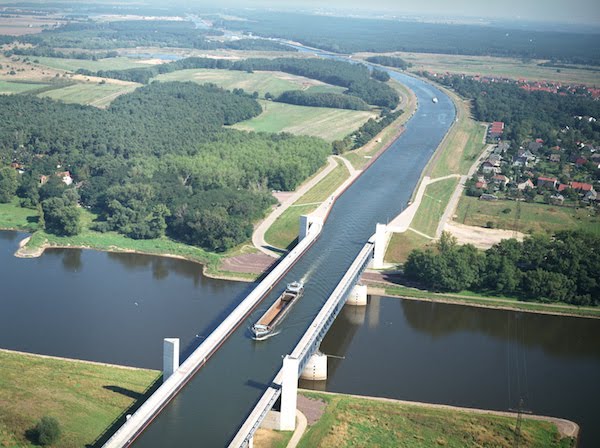
IV. “It is an urban myth that when painters finish their work on the west end of the Golden Gate, they return to the east and start anew. The famed bridge only needs occasional touching up to protect it from the sea air.”—Anonymous
In May of 1945, the Russians, British, and Americans were converging on Berlin. As Dad and his men arrived on the west bank of the Elbe River north of Magdeburg, they were shocked to see that the Russians had beaten them to the river and had already built a narrow footbridge. At the bridge’s western terminus stood one bandoliered Russian sapper with an automatic rifle. Dad spoke not a word of Russian; she spoke not a word of English, so, without a Russian translator in the battalion, the 1698th shouldered their rifles and withdrew to drink some wine they’d discovered in the village of Ohof. Faced with the option of building a bridge or burning one, Dad and his officers decided that, sometimes, it’s best just to leave well enough alone.
Sixty years later, my wife and I drove around Magdeburg looking for the house where she’d been born. In the process, we rebuilt and crossed many of the bridges her family offered to the past. After we’d photographed the house and spoken to some neighbors, we drove to the spot, as Dad had described it, where he’d met the Russian sapper. The footbridge, of course, was gone but, in its place, stood a colossus of German engineering: a 3,000-foot water bridge over the Elbe River carrying canal traffic from as far away as the Rhine and the Wesel-Datteln Canal.

On Earth Day, 2012, Wendell Berry spoke the following words at the National Cathedral in Washington, DC: “Do unto those downstream as you would have those upstream do unto you.” When I telephoned those words to Dad just a few months before he died, he replied, “And we should build some toll-free bridges in between.”

To order copies of Skip Eisiminger’s Letters to the Grandchildren (Clemson University Digital Press), click on the book cover below or contact: Center for Electronic and Digital Publishing, Strode Tower, Box 340522, Clemson SC 29634-0522. For Wordspinner: Mind-Boggling Games for Word Lovers, click on the book cover.
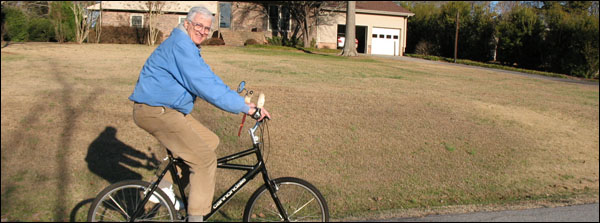
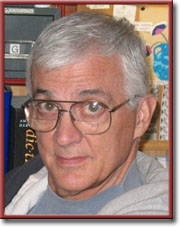
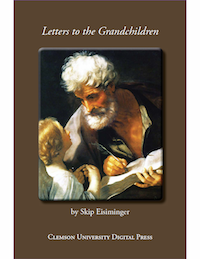

6 Comments
Will
Skip, I do believe this may rank as an argument for including Engineering among the Humanities disciplines! A lovely essay!
Elizabeth Boleman-Herring
I love this, Skip: When Homo sapiens recognized that they functioned more efficiently in sociable groups rather than as isolated individuals or even families, they embarked on an infinitude of bridge building. The results include in no particular order: language “bridges”; domesticated-animal “bridges”; strangler-fig bridges in the Indian rain forests; suspension bridges woven of grass in the Andes; tunnel “bridges” through the Alps and Appalachians; the “fellowship-of-the-rope” bridges mountaineers depend on; ladders, elevators and escalators; mobile “bridges” such as cars, ships and planes; human “bridges” between God and man called “priests” and “pontiffs”; cell phone “bridges”; the “bridges” called email and Twitter, crossed by millions every day; the symbolic, universal “bridge” called mathematics; and ideas like the Golden Rule, which is a golden “bridge” in every major religion.
Skip Eisiminger
Always glad to oblige. Thanks to you both. I’m inspired every day by our Bridge Builder in Chief–Agent Orange.
Jean
Skip, this is wonderful. I love the multiplicity of bridges you consider. Language, art, mathematics – yes. And, my grandfather was a road builder, among other things, so the engineering has always dazzled me. Now, I will think also of the engineering involved in relationships with everything.
Alex Billinis
Your late father’s words speak of a generation that knew when to divide, when to unite, and when to leave well alone. Lost on us. By the way, I know that Mycaenean Bridge. My father showed it to me, about 40 years ago. See you soon at OLLI.
Skip Eisiminger
Thanks, Jean and Alex,
I challenge the opinion that bridge building is lost on us–after all, two of us are volunteer bridge builders at OLLI! And though we’ve never met, Jean just built a virtual bridge to me.
I had not seen the Mycenaean bridge until Elizabeth unearthed it–thanks, e.
Skip